Highest quality fresh fish are delivered promptly
Japanese, with the customer of eating raw fish, have extraordinary preferences for fresh and delicious fish. In the following description, we introduce ways of obtaining fresh fish and the processes of delivering fish in a fresh condition.
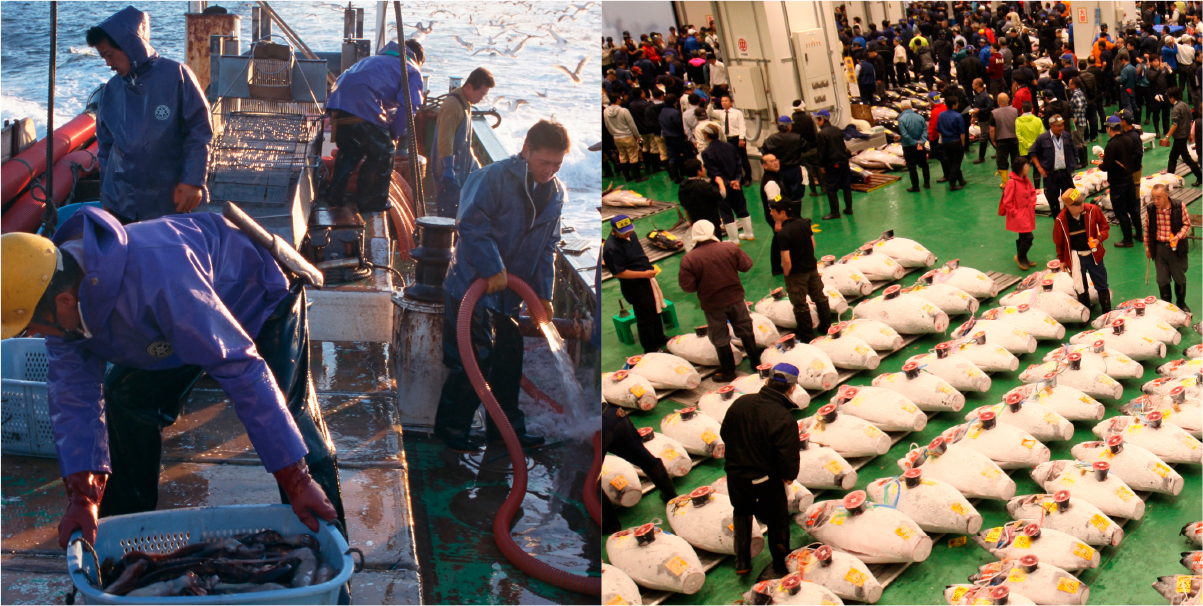
To supply high-quality fish Traditional ways to avoid damaging fish
Fish are caught by using different fishing methods, depending on the kind of fish and the area of fishing. Fishermen select the most appropriate fishing method, adjust net mesh sizes to prevent excess catches, and catch in a fish- and environmentally-friendly method. In particular, in inshore fisheries, conventional fishing methods are still being used, including set net fishery which catches fish by inducing them into a net.
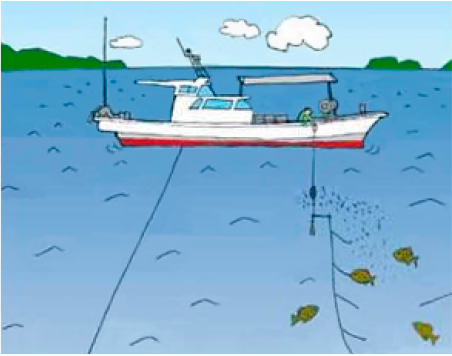
Line fishery
Catching fish using fishing lines protects fish from damage.
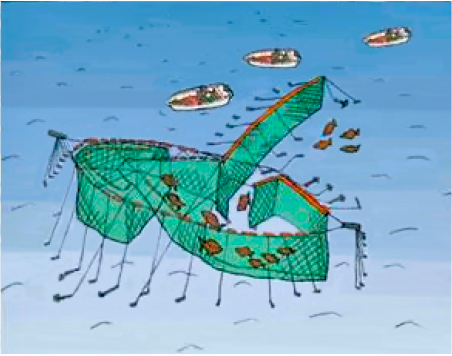
Set net Fishery
With this method, migratory fish are induced into a net.
Farmed fish can compete with wild fish
Farmed fish were once considered inferior in quality to natural fish for their specific oily odor and other reasons. In recent years, however, farmed fish are being more appreciated as technological advancement has improved their taste and safety.
Pick up! Farmed yellowtail fish available in other seasons
FIt is now possible to set the growth cycle of yellowtail fish earlier by six months by artificially extracting eggs from the fish, enabling the marketing of delicious and fatty farmed yellowtail fish in spring and early summer, when the wild yellowtail fish is otherwise scarcely available on the market. In addition, the quality of fish meat is improved by using feed designed to prevent excess fat in the finishing process, while the freshness of the fish is maintained through full temperature control and by quick kill and quick chill. These techniques ensure that farmed yellowtail fish is equal in quality with wild yellowtail.
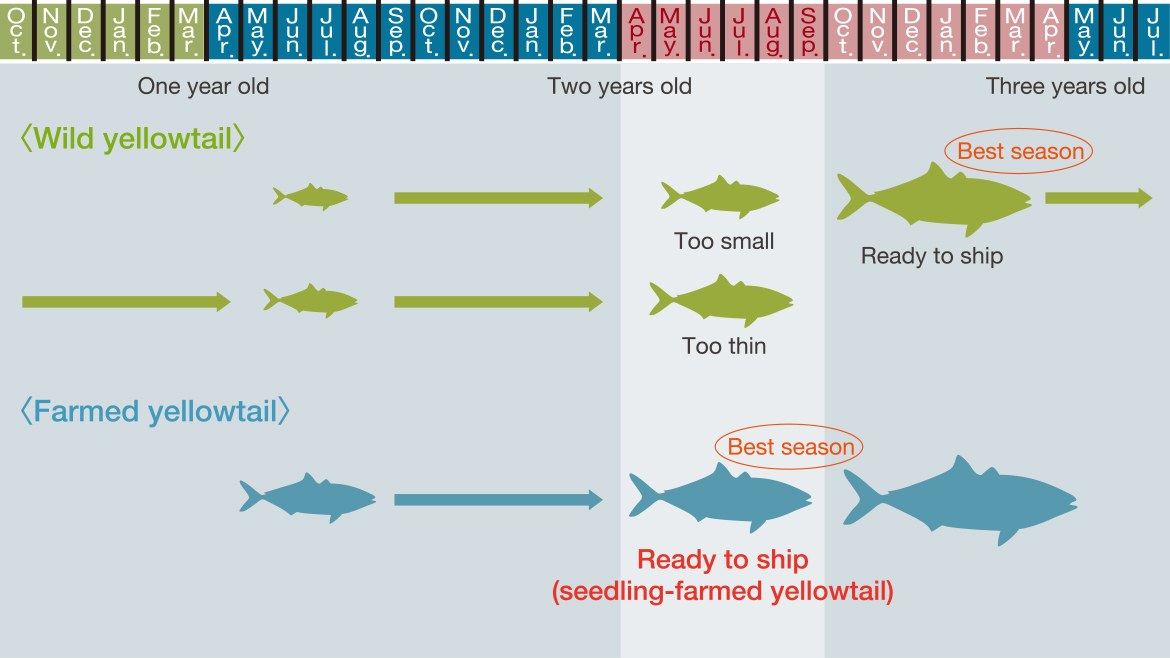
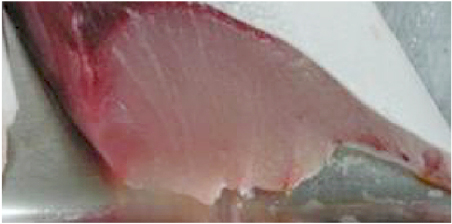
Wild yellowtail available in spring and summer: The meat quality degenerates after spawning
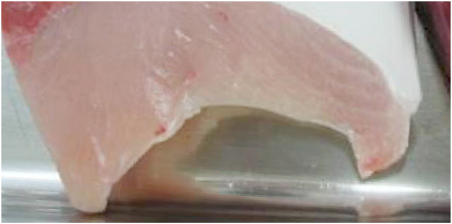
Farmed yellowtail in spring and summer: Fatty and in season
System to deliver just harvested tastes to consumers Distribution bases to supply fish in a stable manner
A wholesale market is a base for delivering food products to consumers, as well as providing producers with stable sales channels. The market plays an important role in connecting consumers to producers engaged in making perishable foods, which are difficult to preserve for a long

Transportation networks available to deliver fresh products quickly
Furnished with cold storages and other relevant facilities and complete with roads from market to airport, wholesale markets can carry foods quickly while maintaining their original freshness. For example, wholesalers are able to deliver fresh products from Tsukiji Market, located in the Tokyo metropolitan area, to Hong Kong during the same day to enable customers there to enjoy sushi as if they were in Japan.
Example of transportation Fresh fish delivered from the Tsukiji Market for Hong Kong

Advanced technology maintains freshness and original taste
To maintain the freshness of foods as long as possible, wholesale markets are introducing most advanced technologies, such as the “sea snow” system, which keeps fish fresh at a temperature below 0 degrees Celsius during transit, without damaging the products, and a cold-insulation container equipped with a cooling function to achieve a seamless cool chain.
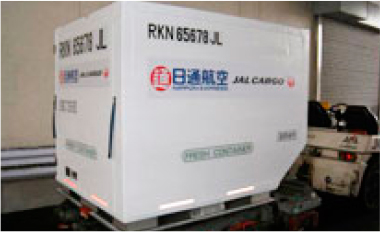
▲Cold-insulation container


